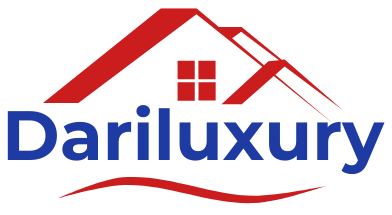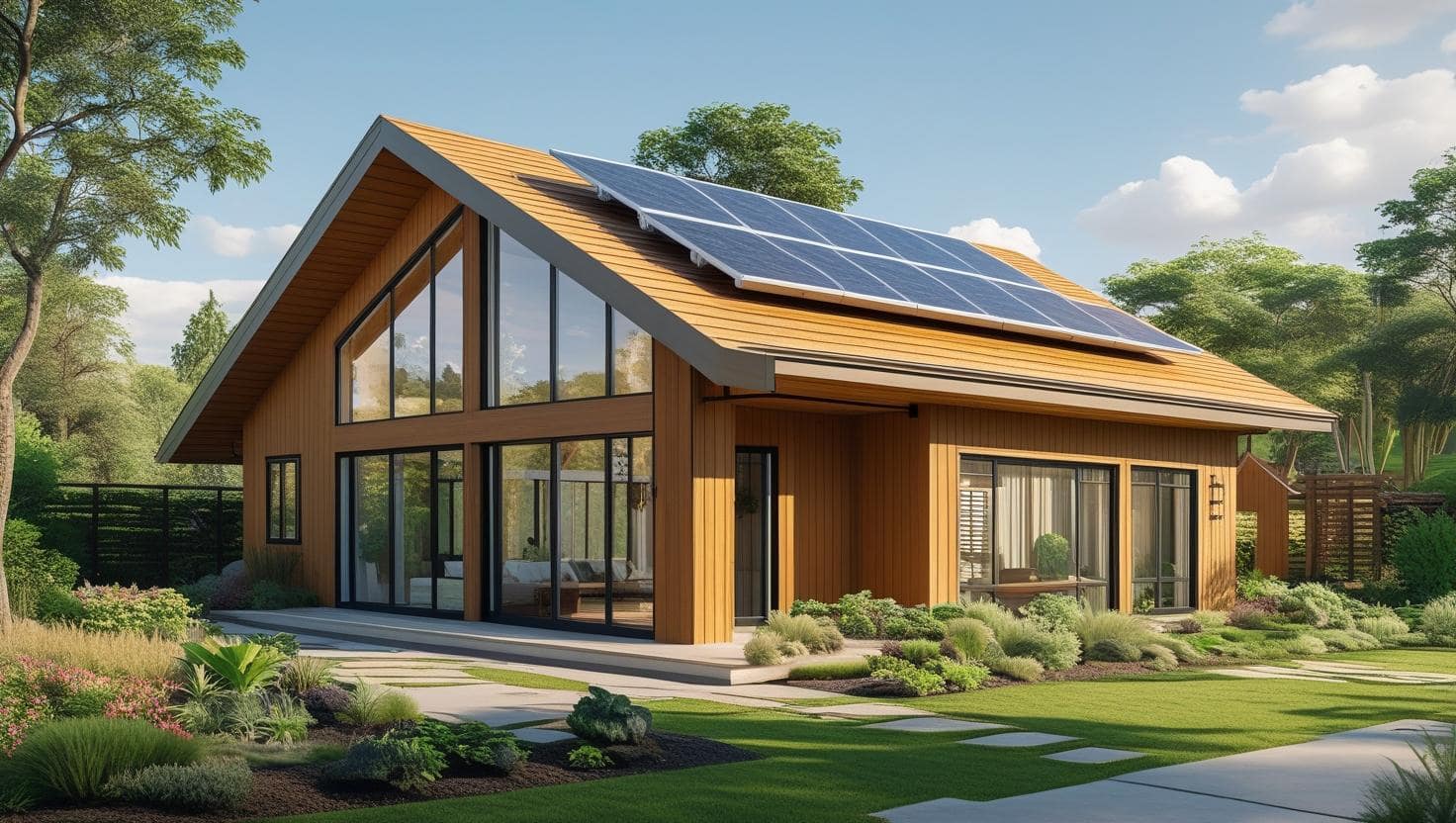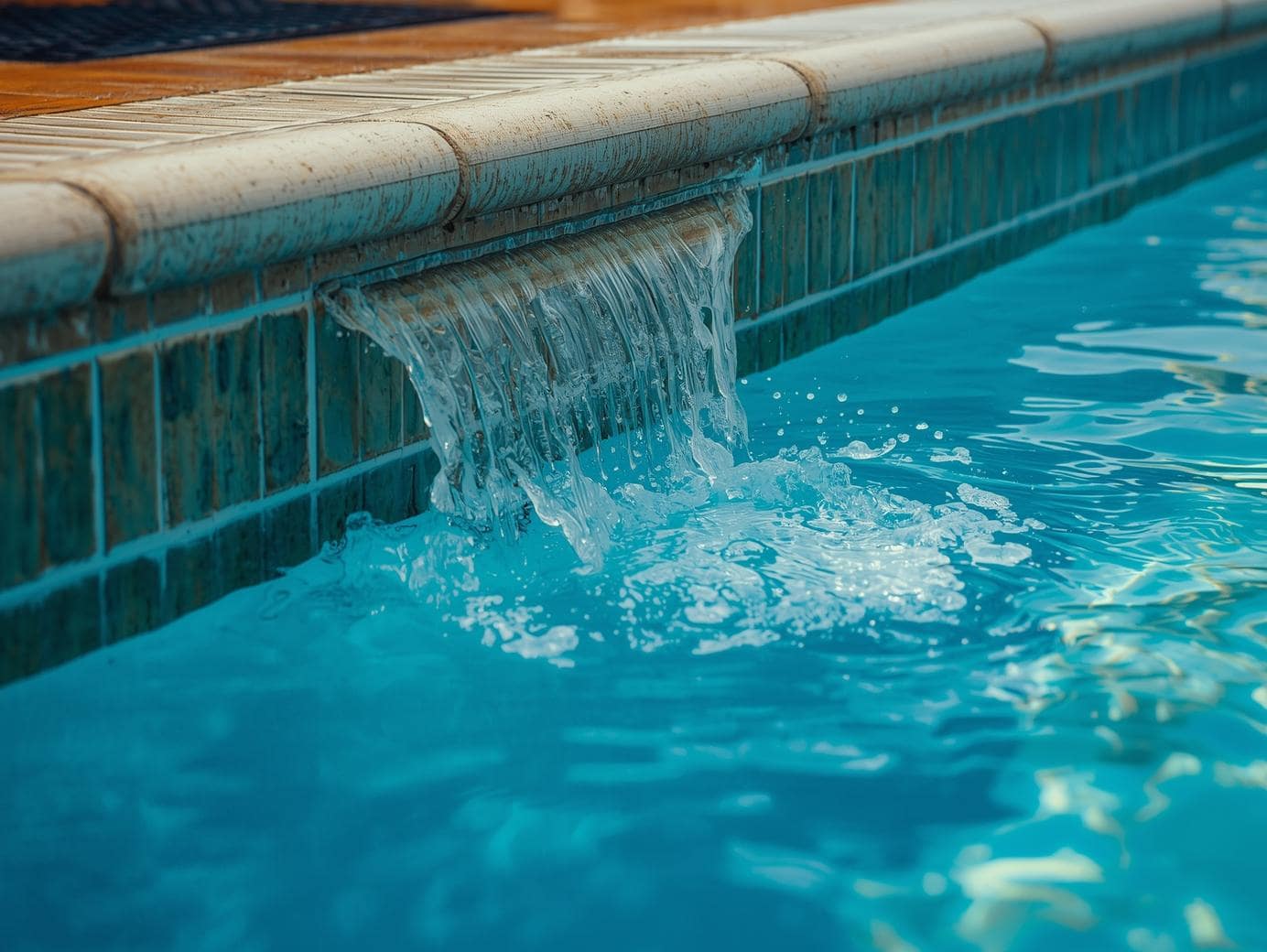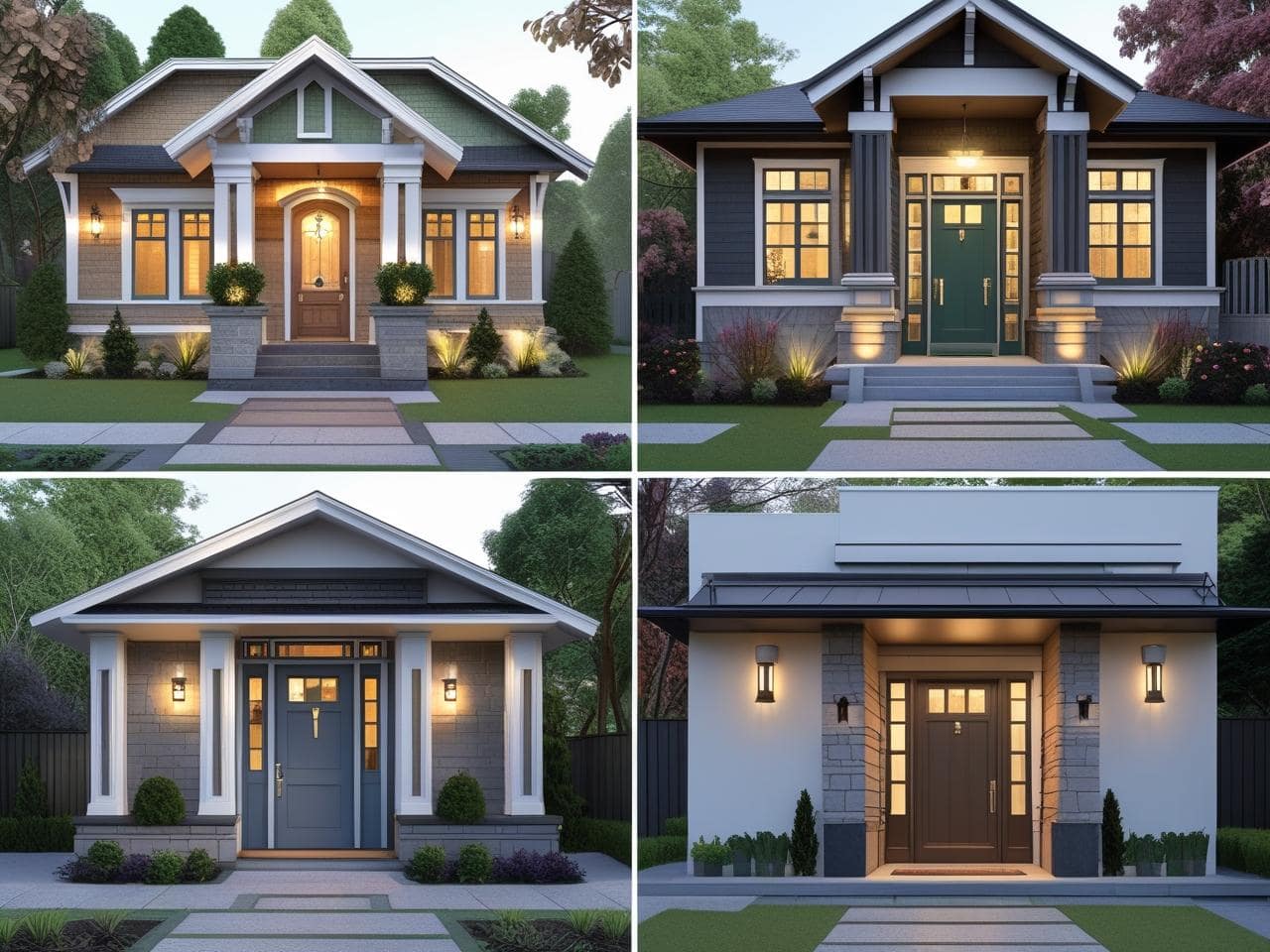Introduction
In an era where environmental consciousness is paramount, homeowners are increasingly seeking ways to reduce their ecological footprint The outside of your home does more than catch the eye, it offers a chance to create a memorable and meaningful statement. Choosing eco-friendly materials and adopting sustainable design practices not only enhances curb appeal but also improves energy efficiency and reduces your home’s environmental footprint. This comprehensive guide explores various eco-friendly, Materials and design approaches that improve your home’s visual charm while promoting a healthier environment.
Understanding Sustainable House Design
At its core, sustainable exterior design focuses on using environmentally responsible materials and construction methods to lessen ecological impact. This approach emphasizes:
- Energy Efficiency: Utilizing materials that enhance insulation and reduce energy consumption.
- Resource Conservation: Choosing materials that are renewable, recyclable, or have low environmental impact.
- Durability: Opting for materials that have a long lifespan and require minimal maintenance.
- Local Sourcing: Using locally sourced materials to reduce transportation emissions and support local economies.
Eco-Friendly Materials for Home Exteriors
1. Recycled and Reclaimed Materials
Incorporating recycled and reclaimed materials into your home’s exterior not only conserves resources but also adds unique character to your property.
- Recycled Metal Siding: Made from salvaged steel or aluminum, recycled metal siding is durable, fire-resistant, and requires less energy to produce compared to new metals. It’s an excellent choice for modern homes aiming for an industrial aesthetic.
- Reclaimed Wood: Sourcing wood from old barns, factories, or demolished buildings gives the material a second life, reducing the need for new timber. Reclaimed wood offers a rustic charm and is ideal for creating a warm, inviting exterior.
2. Natural and Renewable Materials
Opting for materials that are naturally abundant and renewable ensures that your home exterior has minimal environmental impact.
- Bamboo is a fast-growing, durable material that serves as a sustainable substitute for traditional timber.Perfect for cladding, decking, or fencing, it adds a clean, contemporary style to any outdoor space.
- Cork is a sustainable resource obtained by carefully removing the bark from cork oak trees, allowing the trees to remain unharmed.It’s naturally lightweight, fire-resistant, and offers impressive thermal and sound insulation.
- Hempcrete: A mixture of hemp fibers and lime, hempcrete is a carbon-negative material that offers superior insulation properties.It allows for natural airflow, resists mold growth, and supports a healthier indoor atmosphere.
3. Sustainable Roofing Options
The roof is a critical component of your home’s exterior, influencing both aesthetics and energy efficiency.
- Recycled Metal Roofing: Similar to metal siding, recycled metal roofing is durable and energy-efficient. It reflects solar heat, reducing cooling costs in hot climates.
- Clay Tiles: Made from natural clay, these tiles are durable and provide excellent thermal insulation.They are built to last for decades and can be fully recycled once they’ve reached the end of their service life.
- Green Roofs: Also known as living roofs, these are covered with vegetation, providing natural insulation, reducing stormwater runoff, and promoting biodiversity.
4. Eco-Friendly Insulation Materials
Good insulation is key to maintaining your home’s comfort and energy efficiency throughout the entire year.
- Sheep’s Wool Insulation: A natural, renewable resource, sheep’s wool is breathable, moisture-regulating, and has excellent thermal properties.
- Crafted from sustainably harvested wood, wood fiber insulation is recyclable, breathable, and offers effective acoustic insulation, making it ideal for eco-friendly construction.
- Cork Panels: In addition to being used for cladding, cork can also serve as an effective insulation material, offering thermal and acoustic benefits.
5. Sustainable Home Design – Paints and Finishes
The finishes you choose for your home’s exterior can impact both its appearance and environmental footprint.
- Low-VOC and Zero-VOC Paints: These paints emit fewer volatile organic compounds, improving indoor air quality and reducing environmental pollution.
- Natural Oils and Waxes: Derived from plants, these finishes penetrate wood surfaces, enhancing durability and appearance without the use of harmful chemicals.
Design Strategies for Sustainable Exteriors
Beyond material selection, thoughtful design strategies can further enhance the sustainability of your home’s exterior.
1. Passive Solar Design
Incorporating passive solar design principles can significantly reduce energy consumption.
- Orientation: Positioning your home to maximize natural light and heat from the sun can reduce the need for artificial lighting and heating.
- Window Placement: Strategically placing windows allows for natural ventilation and daylighting, reducing reliance on HVAC systems.
2. Water Conservation Features
Implementing water-saving features in your home’s exterior can reduce consumption and promote sustainability.
- Rainwater Harvesting Systems: Collecting and storing rainwater for irrigation and other non-potable uses reduces demand on municipal water supplies.
- Drought-Resistant Landscaping: Choosing native plants that require less water and maintenance conserves resources and supports local ecosystems.
3. Energy-Efficient Lighting
Outdoor lighting not only beautifies your home’s exterior but also helps reduce energy consumption.
- LED Fixtures: Using LED bulbs reduces energy consumption and has a longer lifespan compared to traditional lighting options.
- Solar-Powered Lights: Harnessing solar energy for outdoor lighting eliminates electricity costs and reduces environmental impact.
Benefits of Sustainable Exterior Design
Adopting sustainable exterior design practices offers numerous advantages:
- Environmental Impact: Reduces resource consumption, minimizes waste, and lowers greenhouse gas emissions.
- Cost Savings: Energy-efficient materials and systems can lead to lower utility bills over time.
- Enhanced Property Value: Homes with sustainable features are increasingly sought after in the real estate market.
- Using non-toxic materials combined with enhanced insulation promotes a healthier and more comfortable home environment.
Conclusion
Embracing sustainable exterior design is a proactive step toward creating a more environmentally responsible and energy-efficient home. By carefully selecting eco-friendly materials and implementing thoughtful design strategies, you can enhance your home’s aesthetic appeal while contributing positively to the planet. Remember, every small change counts, and collectively, these efforts can lead to a significant impact.
Build a Greener Future from the Outside In
Want to improve your home’s appearance while making environmentally friendly choices? Start with your exterior.. upgrade to eco-friendly materials, embrace energy-efficient design, and reduce your environmental impact. Whether you’re planning a full renovation or small changes, every step counts. Connect with green building experts, explore local suppliers of sustainable materials, or take advantage of energy-efficiency incentives in your area. Download our free Sustainable Exterior Design Guide to get started, and join a community of homeowners committed to eco-conscious living. Start your journey today by making your home a beacon for a healthier planet.
1. What is sustainable house design?
Sustainable house design focuses on creating homes that are energy-efficient, environmentally friendly, and built with sustainable materials to reduce carbon footprint.
2. Which eco-friendly materials are best for sustainable home construction?
Some top eco-friendly materials include bamboo, recycled steel, reclaimed wood, cork, and insulated concrete forms.
3. How does sustainable house design help the environment?
It minimizes energy consumption, reduces waste, conserves water, and uses non-toxic materials, which lowers the overall environmental impact.
4. Are sustainable homes more expensive to build?
Initial costs may be higher, but long-term savings on energy bills and maintenance often make sustainable homes more cost-effective over time.
5. Can sustainable design be applied to modern or luxury homes?
Yes, sustainable principles can be incorporated into any style, including modern and luxury homes, without sacrificing aesthetics or comfort.




pvmxfzutqezggpmlzzpmhsprewyxft
lfyweb
yqfhxa
znat9f
yzpik5
60echc
mt21b0
rdhkxl
brxsvr
wfa3rp
**mindvault**
mindvault is a premium cognitive support formula created for adults 45+. It’s thoughtfully designed to help maintain clear thinking
hrrm9u
**prostadine**
prostadine is a next-generation prostate support formula designed to help maintain, restore, and enhance optimal male prostate performance.
**sugarmute**
sugarmute is a science-guided nutritional supplement created to help maintain balanced blood sugar while supporting steady energy and mental clarity.
**glpro**
glpro is a natural dietary supplement designed to promote balanced blood sugar levels and curb sugar cravings.
**vittaburn**
vittaburn is a liquid dietary supplement formulated to support healthy weight reduction by increasing metabolic rate, reducing hunger, and promoting fat loss.
**mitolyn**
mitolyn a nature-inspired supplement crafted to elevate metabolic activity and support sustainable weight management.
**prodentim**
prodentim an advanced probiotic formulation designed to support exceptional oral hygiene while fortifying teeth and gums.
**synaptigen**
synaptigen is a next-generation brain support supplement that blends natural nootropics, adaptogens
**zencortex**
zencortex contains only the natural ingredients that are effective in supporting incredible hearing naturally.
**yu sleep**
yusleep is a gentle, nano-enhanced nightly blend designed to help you drift off quickly, stay asleep longer, and wake feeling clear.
**nitric boost**
nitric boost is a dietary formula crafted to enhance vitality and promote overall well-being.
**glucore**
glucore is a nutritional supplement that is given to patients daily to assist in maintaining healthy blood sugar and metabolic rates.
**wildgut**
wildgutis a precision-crafted nutritional blend designed to nurture your dog’s digestive tract.
**breathe**
breathe is a plant-powered tincture crafted to promote lung performance and enhance your breathing quality.
**energeia**
energeia is the first and only recipe that targets the root cause of stubborn belly fat and Deadly visceral fat.
**boostaro**
boostaro is a specially crafted dietary supplement for men who want to elevate their overall health and vitality.
**pinealxt**
pinealxt is a revolutionary supplement that promotes proper pineal gland function and energy levels to support healthy body function.
**prostabliss**
prostabliss is a carefully developed dietary formula aimed at nurturing prostate vitality and improving urinary comfort.
k2uz7p
**potent stream**
potent stream is engineered to promote prostate well-being by counteracting the residue that can build up from hard-water minerals within the urinary tract.
**hepatoburn**
hepatoburn is a premium nutritional formula designed to enhance liver function, boost metabolism, and support natural fat breakdown.
**hepatoburn**
hepatoburn is a potent, plant-based formula created to promote optimal liver performance and naturally stimulate fat-burning mechanisms.
**cellufend**
cellufend is a natural supplement developed to support balanced blood sugar levels through a blend of botanical extracts and essential nutrients.
**prodentim**
prodentim is a forward-thinking oral wellness blend crafted to nurture and maintain a balanced mouth microbiome.
**flow force max**
flow force max delivers a forward-thinking, plant-focused way to support prostate health—while also helping maintain everyday energy, libido, and overall vitality.
**revitag**
revitag is a daily skin-support formula created to promote a healthy complexion and visibly diminish the appearance of skin tags.
**neurogenica**
neurogenica is a dietary supplement formulated to support nerve health and ease discomfort associated with neuropathy.
**sleep lean**
sleeplean is a US-trusted, naturally focused nighttime support formula that helps your body burn fat while you rest.
**memory lift**
memory lift is an innovative dietary formula designed to naturally nurture brain wellness and sharpen cognitive performance.
2sumhu
I went over this website and I believe you have a lot of great info , saved to bookmarks (:.
fun casino
References:
http://cdss.snw999.com/space-uid-1850289.html
eqc casino
References:
https://www.kdbang.vip/home.php?mod=space&uid=1194325
william hill android app download
References:
http://yigaizhuang.net/home.php?mod=space&uid=640987
holland casino online
References:
https://escatter11.fullerton.edu/nfs/show_user.php?userid=9410295
mobile slot games
References:
https://abcbbk.com/space-uid-568850.html
london casino
References:
https://www.google.at/url?q=https://atavi.com/share/xkphgizv4r8h
lodge casino
References:
http://lzdsxxb.com/home.php?mod=space&uid=5388851
new york new york casino las vegas
References:
https://bom.so/1s97ES
double diamond slots
References:
http://lzdsxxb.com/home.php?mod=space&uid=5388874
slot games online
References:
https://maps.google.com.br/url?q=https://bbs.pku.edu.cn/v2/jump-to.php?url=Blackcoin.co
bimini casino
References:
https://images.google.bg/url?q=https://apunto.it/user/profile/415069
circus circus casino
References:
https://heeuxuzb.517818.com/home.php?mod=space&uid=128722
greenbrier casino
References:
http://47.105.50.196/larashaffer165
casinos tunica ms
References:
https://whatchats.com/read-blog/10875_best-online-pokies-amp-no-deposit.html
snohomish casino
References:
https://sound.ukrsocial.com.ua/earthajvp29531
kansas star casino
References:
https://snapfyn.com/latiatier69205
ameristar casino st charles mo
References:
https://candidates.giftabled.org/employer/blackcoin-and-co/
du mobile internet
References:
http://git.edazone.cn/nicholasl80668
ac casinos
References:
https://leafreward.com/read-blog/8901_20-best-casino-podcasts-to-listen-to-in-2025.html
casinobonus2 com
References:
http://www.memememo.com/link.php?url=http://www.mediafire.com/file/azxg2a28vhgs4yc/pdf-49984-60610.pdf
resto a paris
References:
http://uzmuz.tv/go.php?url=https://www.bokkmarking-signs.win/best-n1-casinos-new-n1-interactive-casinos-2024
reef casino
References:
https://myfilmix.ru/user/lunduribzi
mobile casino games
References:
http://group.so-ten.jp/redirect.php?rurl=https://forum.xn--frderung-n4a.at/member.php?action=profile&uid=270337
nevada casinos
References:
http://drakonas.wip.lt/redirect.php?url=https://blurriechan.blurriecon.com/member.php?action=profile&uid=173052
mega slots
References:
http://xurl.es/46txc
quebec montreal
References:
https://www.argfx.argfx1.com/user/typhandghr
Auf dieser Spieleplattform können Sie viele Spiele kostenlos ausprobieren. Auch Fans von Krypto Casinos kommen dank der breiten Spielauswahl auf ihre Kosten. Die Casino-Experten sind bestrebt, Innovation mit erstklassigem Kundenservice zu kombinieren, um ein überragendes Spielerlebnis zu bieten. Für weitere Informationen zu den speziellen Sonderbonus-Angeboten empfehlen wir den Besuch der offiziellen NV Casino Website. Das NV Casino bietet mehrere bequeme Zahlungsmethoden. Die offizielle Website-Adresse von NV Casino lautet nv.casino. Auf der Plattform gibt es viele Slots, Karten- und Tischspiele, Live-Dealer-Spiele usw.
Egal, ob Sie die Walzen drehen, Karten spielen oder das echte Casino-Feeling live erleben möchten – im NV Casino finden Sie alles unter einem Dach. Das NV Casino bietet eine 50% Bonusaktion bis zu 300 €, kombiniert mit 50 Freispielen für beliebte Slots. Deshalb bieten wir unseren Casino-Spielern Zugang zu einer großen Auswahl an Tischspielen, darunter Roulette, Baccarat, Poker und Blackjack. Der Willkommensbonus hat eine 40-fache Wettanforderung für Bonusgelder und eine 30-fache Wettanforderung für Gewinne aus Freispielen. Diese Glücksspielplattform kombiniert eine große Auswahl an Echtgeldspielen, darunter Slotspiele, Tischspiele und Live-Casino-Optionen, mit verlockenden Casino-Boni und einer Verpflichtung zu sicheren Zahlungen und schnellen Auszahlungen. NV Casino zeichnet sich als eines der führenden Online-Casinos für Spieler in Deutschland aus und bietet einen beeindruckenden Willkommensbonus von bis zu 2.000 € und 225 Freispiele. NV Casino ist ein erstklassiges Online-Casino für Spieler in Deutschland und bietet einen beeindruckenden Willkommensbonus von bis zu 2.000 € und 225 Freispiele.
References:
https://online-spielhallen.de/verde-casino-deutschland-sicher-boni-spiele/
Unser Ziel ist es, Spielern ein sicheres, unterhaltsames und zuverlässiges Spielerlebnis zu bieten. Anreize für das Schreiben von Bewertungen anzubieten oder selektiv zur Bewertungsabgabe einzuladen, kann den TrustScore verfälschen. Also ich kann nur abraten von dem casino dass ist von Brutalität nicht zu übertreffen. Nur eine sehr begrenzte Auswahl wenn man mit bonus spielt 600 spinns nichts passiert… Ich hale 25 euro ein und muss erst einen umsatz von 1276 machen um es auzahlen zu können.
Die Mindesteinzahlung beträgt 40€ für die es dann 20 Freispiele gibt. Bestandskunden haben aber auch abgesehen vom VIP-Club die Möglichkeit, sich Woche für Woche Einzahlungsboni und Freispiele zu sichern. Dennoch berechtigt die Lizenz das Online Casino dazu, Glücksspiele anbieten zu dürfen. Einzahlung15€15€ Spielart UmsatzSlots 100%, Tischspiele (auch live) 5%Slots 100%, Tischspiele (auch live) 5% Max. Die Filteroptionen sind standargemäß nach Slots, Live Casino, Tischspielen, Weitere, Bonus Buy, Instant Games und Drop and Wins sortiert. Diese Codes können während der Registrierung oder bei Einzahlungen eingegeben werden, um zusätzliche Bonusgelder, Freispiele oder andere Vergünstigungen zu erhalten.
References:
https://online-spielhallen.de/beste-paypal-casinos-2025-top-anbieter-einzahlen/
Der Automat steht in der deutschen Beliebtheitsskala seit vielen Monaten auf dem ersten Platz, nicht ohne Grund. Wer im Online Casino spielen will, muss sich als Anfänger keine größeren Gedanken machen. Die Überzahl der Online Casinos wertet die Gewinne aus den Freispielen als Bonusguthaben.
Unser Team hat jedes Online Casino eingehend geprüft und bewertet, um dir eine solide Entscheidungsgrundlage zu bieten. Sie ermöglichen es dir, von exklusiven Angeboten und Aktionen zu profitieren und bieten Einblicke in wichtige Themen wie verantwortungsvolles Spielen, Spielerschutz und aktuelle Studien zur Spielsucht. Dank unserer Zusammenstellung der besten Casino-Bonusangebote können deutsche Spieler das Beste aus ihrem Online-Casino-Erlebnis herausholen und ihr Gewinnpotenzial maximieren. Wir legen besonderen Wert darauf, dass alle Bonusangebote fair, transparent und speziell auf deutsche Spieler zugeschnitten sind. Unsere Auswahl umfasst großzügige Willkommensboni, Einzahlungsboni, Freispiele, Freundschaftsboni, Reload-Boni und andere attraktive Bonusmöglichkeiten.
References:
https://online-spielhallen.de/beste-online-casinos-deutschland-top-10-nov-2025-3/
Wie gut sichtbar die Bedingungen eines Bonusangebots sein müssen, ist weder bei der deutschen Zulassung noch bei der EU-Lizenz klar geregelt. Bei den Regeln zur deutschen Lizenz sind sie allerdings etwas schärfer und somit wohl auch besser. Manche Zahlungsmethoden sind ausschließlich in Casinos mit der deutschen Lizenz vertreten. Unter Online Casinos mit deutscher Lizenz verstehen wir Glücksspiel-Webseiten, die über die GGL lizenziert sind. Casinos mit deutscher Lizenz bieten einen starken Spielerschutz, seltene Slots aus der Spielhalle und teilweise attraktive Bonusangebote. Online Casinos mit deutscher Lizenz unterliegen vielen Einschränkungen wie reduzierter Spieleauswahl und festen Limits für Einsatz und Einzahlungen.
Gerade weil es bei Glücksspielen um Geld geht, sollte das Hauptaugenmerk lizenzierter Slot Anbieter, Bookies und Pokerräume dem sicheren wie seriösen Transfer gelten. Übergangsweise wurde diese Aufgabe vom Landesverwaltungsamt Sachsen-Anhalt übernommen, das bereits mit der Lizenzvergabe gestartet ist und einigen Unternehmen offizielle Erlaubnisse zum Anbieten von Glücksspielen erteilt hat. Das Positive hierbei ist, dass Kunden auf der sicheren Seite sind, denn allein zum Erhalt einer deutschen Glücksspiellizenz sind Unternehmen in der Pflicht, ein Kapital in Höhe von 5 Millionen Euro auf einem Bon-Konto zu hinterlegen. Legal und insbesondere unter sicheren Bedingungen spielen können Kunden überall dort, wo eine deutsche Lizenz nachgewiesen werden kann. Dank der bundesweiten Neuregulierung des Glücksspielwesens (durch den GlüStV 2021 vom 29. Oktober 2020) sind virtuelle Automatenspiele, online Poker und Sportwetten vollständig reguliert und lizenziert. Diese Spiele sind ein wesentlicher Bestandteil des Angebots in einem best online casino. Das Spinz Casino lockt mit einem großzügigen 400 % Willkommensbonus und zusätzlich 50 Freispielen.
References:
https://online-spielhallen.de/cosmo-casino-erfahrungen-mitglied-von-casino-rewards/
Die neuen Online Casinos bieten euch hierzu eine große Auswahl an Einzahlungsmethoden an. Im ersten Schritt müsst ihr euch für eines der besten neuen Online Casinos entscheiden – idealerweise ein Online Casino ohne OASIS, um uneingeschränkt spielen zu können. Eigentlich war gedacht, dass ihr nur noch in den Online Casinos legal spielen könnt, die sich eine der Lizenzen aus Hessen und/oder Sachsen-Anhalt sichern konnten. In neuen Online Casinos könnt ihr in Deutschland ohne OASIS und LUGAS spielen! Bei Automatentest.de analysiere ich Zahlungsmethoden auf Geschwindigkeit, Gebühren und Sicherheit, damit ihr stressfrei einzahlen, spielen und gewinnen könnt – ohne Gebühren und Risiken! So könnt ihr problemlos von eurem Smartphone oder Tablet aus spielen – mit vollem und benutzerfreundlichem Zugriff auf das gesamte Spielangebot.
Derzeit gibt es weltweit insgesamt 26 Länder, die Glücksspiellizenzen vergeben. In der Tat sind aber die besten und bekanntesten europäischen Internet-Casinos dort lizenziert. Ab diesem Zeitpunkt waren Glücksspielanbieter mit einer Lizenz vertrauenswürdig und man konnte sich sichere Portale aussuchen. Die Spieler in Deutschland befinden sich stets in einer Übergangsphase, was bedeutet, dass die rechtliche Situation beim Spielen in einem Echtgeld-Casino noch nicht eindeutig geklärt ist. Dabei werden Online-Casinos nach Kriterien, die wir im Laufe der Jahre entwickelt haben getestet und immer weiter verfeinert haben, um die besten neuen Online Casinos für deutsche Spieler finden zu können. Denkbar sind aber auch Angebote wie ein Bonus ohne Einzahlung oder Freispiele.
References:
https://online-spielhallen.de/vulkan-vegas-casino-bonus-spiele-zahlungen/
hammond casino
References:
https://maps.google.com.qa/url?q=https://rentry.co/bwdapxw7
paris casino
References:
https://www.google.com.gi/url?q=https://peatix.com/user/28434648
Great blog here! Additionally your web site lots up very fast! What host are you using? Can I am getting your affiliate link to your host? I want my site loaded up as fast as yours lol
Can you be more specific about the content of your article? After reading it, I still have some doubts. Hope you can help me. https://accounts.binance.com/es/register?ref=RQUR4BEO
Wow, this post is good, my sister is analyzing such things, thus I am going to inform her.
Your point of view caught my eye and was very interesting. Thanks. I have a question for you.
ยาสอดทำแท้งมีกี่ชนิด
ยาสอดทำแท้งมีหลายชนิดที่ใช้ได้ในกระบวนการทำแท้งเจตนา ตัวอย่างของยาสอดทำแท้งที่ใช้แพร่หลายได้แก่:
1. Mifepristone (RU-486, Mifeprex): เป็นยาที่ใช้ในการยับยั้งฮอร์โมนที่จำเป็นสำหรับการติดต่อตระกูล มักใช้ร่วมกับยา
Misoprostol.
2. Misoprostol: เป็นยาที่ใช้เพื่อกระตุ้นการตกของรังไข่จากมดลูก มักใช้ร่วมกับยา Mifepristone หรืออาจใช้เป็นตัวเดียวก็ได้.
3. Methotrexate: เป็นยาที่ใช้ในกระบวนการทำแท้งเจตนา โดยกระตุ้นการตกของรังไข่
ยานี้มักใช้ในระยะเริ่มต้นของการตั้งครรภ์.
line : @2planned
https://cy2tec.com/blog4.html